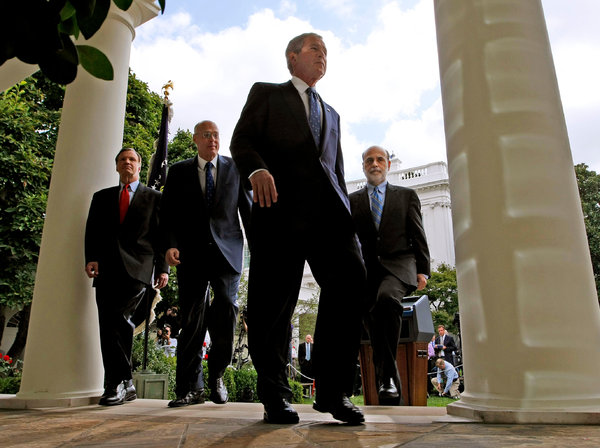The New York Times gets transcripts of conversations between the economists responsible for guiding the U.S. economy past the financial crisis, and failing.
The hundreds of pages of transcripts, based on recordings made at the time, reveal the ignorance of Fed officials about economic conditions during the climactic months of the financial crisis. Officials repeatedly fretted about overstimulating the economy, only to realize time and again that they needed to redouble efforts to contain the crisis.
Some of this stuff just gets to depressing to read in its various reiterations, but I did anyway (in no small part because my 7-year-old saw the photo of Geithner, Bernanke, and Paulson on the front of our paper and asked what the story was about.) The fumbling, the over-confidence, the ingrained reluctance to believe that the system could be failing, and the apparent aversion to stimulus (even after things got worse) are all laid out in phone calls and emails.
By the end of the year, the Fed had cut interest rates nearly to zero and started to buy mortgage bonds in a further effort to stimulate the housing market and the broader economy. More than five years later, it is still pursuing both policies even as the economic recovery remains incomplete.Some Fed officials have argued that the Fed was blind in 2008 because it relied, like everyone else, on a standard set of economic indicators.As late as August 2008, “there were no clear signs that many financial firms were about to fail catastrophically,” Mr. Bullard said in a November presentation in Arkansas that the St. Louis Fed recirculated on Friday. “There was a reasonable case that the U.S. could continue to ‘muddle through.’ ”
Read: Fed Misread Crisis in 2008, Records Show – NYTimes.com.
